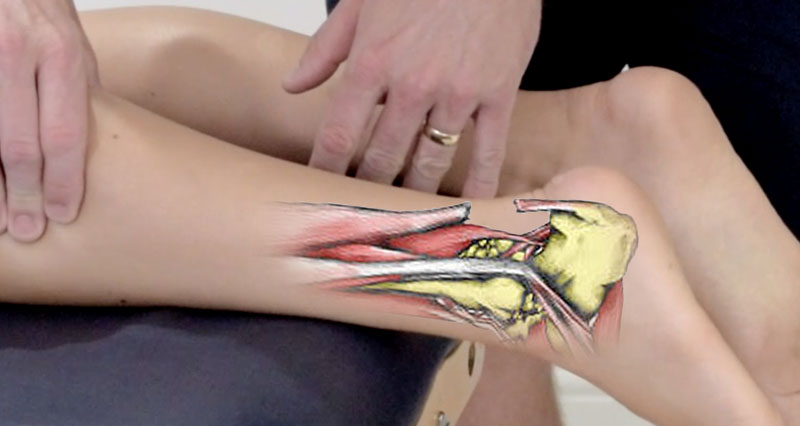The Squeeze Test for high ankle sprain is a diagnostic method that specifically assesses the integrity of the ligaments between the tibia and fibula, helping to identify high ankle sprains or syndesmosis injuries.
What is a High ankle sprain?

A high ankle sprain is a tear of the tibiofibular ligament at the top of the ankle. It is more severe than a common sprained ankle because it often occurs along with a fracture. As a result, it is usually more difficult to treat.
The most commonly injured ligament in a high ankle sprain is the anterior tibiofibular ligament. The anterior tibiofibular ligament connects the tibia to the fibula at the front of the ankle. Its function is to prevent the two bones separating when standing, walking or running. Severe injuries can also cause damage to the syndesmosis which is a membrane connecting the Tibia and Fibula.
How to perform the squeeze test for high ankle sprain:
Start by having the person sit or lie down comfortably with their leg extended. Gently grasp the lower part of their leg, just above the mid-calf. Next, firmly squeeze the tibia and fibula together. Watch the person’s face for signs of pain or discomfort as you apply pressure. Pain in the ankle during this test suggests a high ankle sprain.

Considerations
Use this test in conjunction with the Internal and external ankle rotation test to help diagnose a high ankle sprain. Also, be mindful of the patient’s pain tolerance; excessive force can worsen injuries. Consider additional imaging or a specialist consultation for a more detailed assessment.





